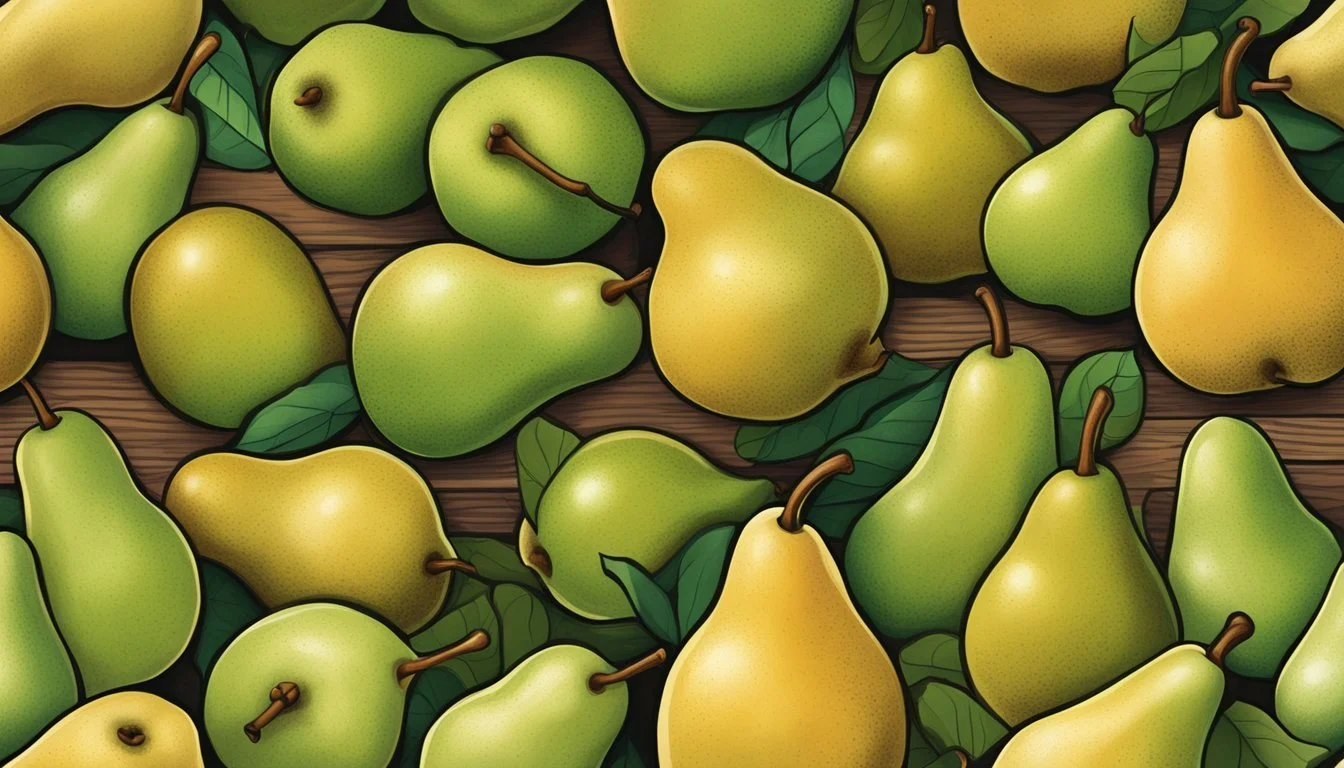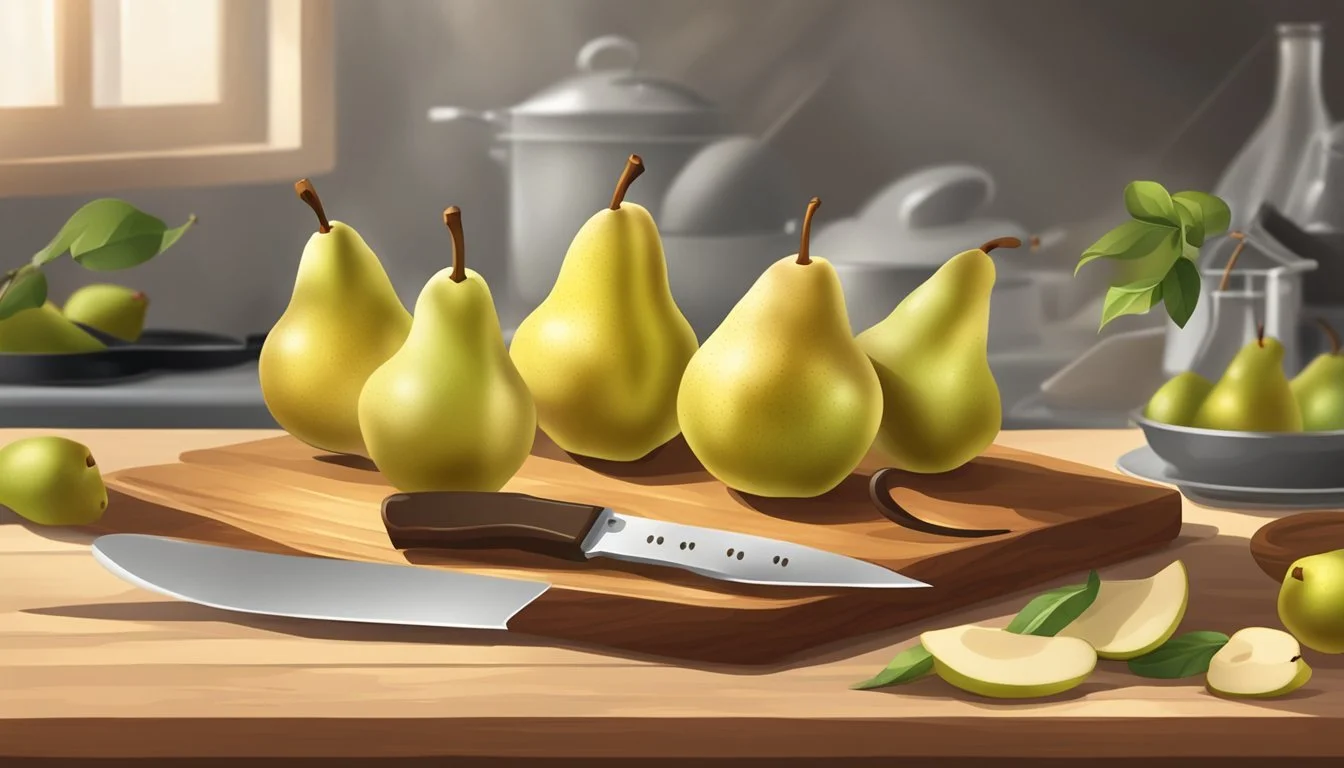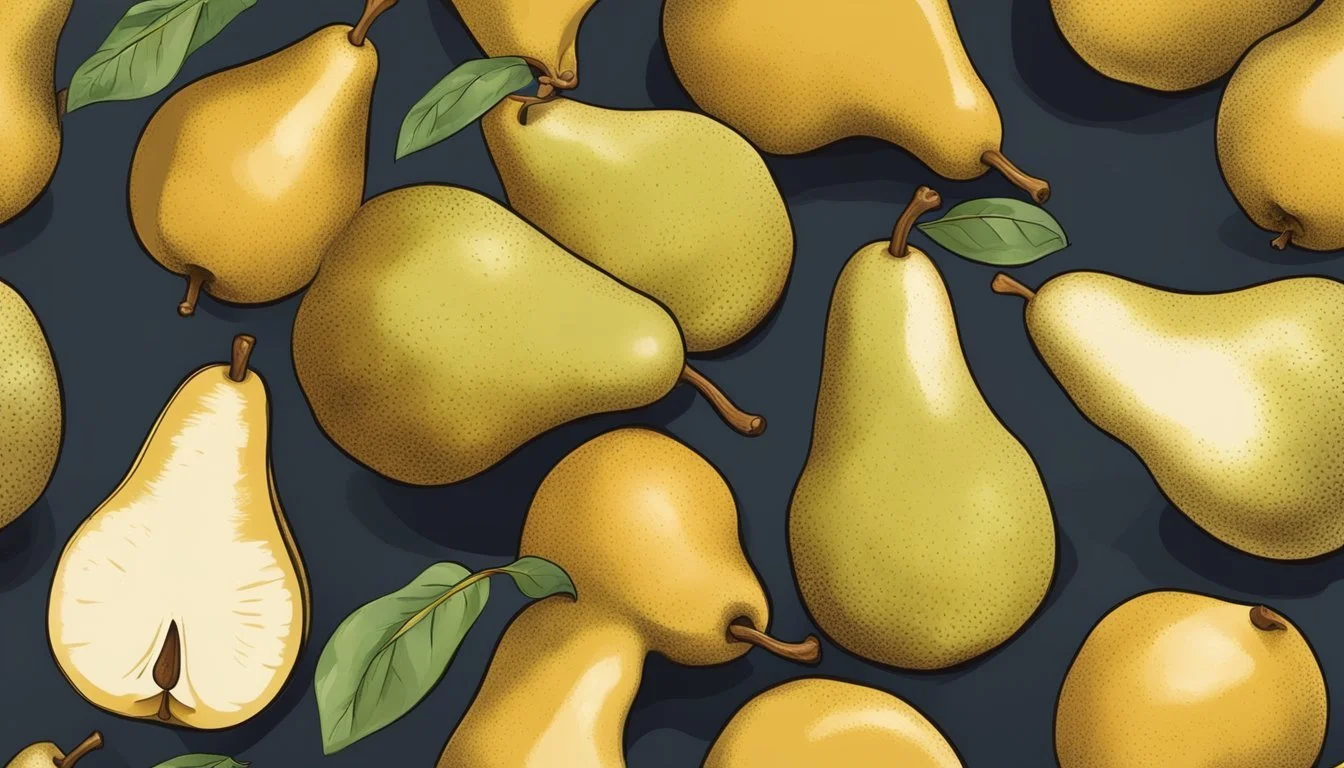How to Tell if Bosc Pears Are Ripe
Spotting Peak Perfection
Determining the ripeness of Bosc pears is key to enjoying their full flavor and juiciness. Unlike other fruits, Bosc pears have particular ripeness indicators due to their unique texture and composition. While they maintain firmness when ripe, subtle changes in color and aroma can signal their ideal eating condition. Recognizing these signs ensures that you can relish the pears at their peak, whether you're eating them fresh or using them in cooking.
Bosc pears, with their elegant elongated neck and russet skin, are a popular variety known for their sweet-spicy flavor. They are versatile in the kitchen, excellent for baking and poaching, and a delightful addition to salads and cheese boards. By understanding how to assess ripeness, not only can you enhance your culinary experiences but also maximize the health benefits these pears offer. Moreover, knowing proper harvesting and storage techniques can extend the enjoyment of Bosc pears beyond their picking season.
Key Takeaways
Subtle changes in a Bosc pear's color and aroma indicate ripeness.
Proper assessment of ripeness enhances both flavor and nutrient intake.
Knowledge of storage techniques extends the enjoyment of Bosc pears.
Identifying Ripe Bosc Pears
When selecting a Bosc pear, a person looks for certain visual, tactile, and olfactory indicators. Here's a guide to determine if a Bosc pear is ready to enjoy.
Checking the Color
A ripe Bosc pear typically displays a golden brown hue, transitioning away from green near the stem. The color change signals ripeness, although a perfect Bosc pear may still possess subtle hints of green.
Feeling the Texture
The texture of a ripe Bosc pear should be smooth without any wrinkles or blemishes on the skin. It’s important to handle the pear gently to avoid bruising, which affects its texture and taste.
Examining the Neck
To determine ripeness, one must apply gentle pressure to the neck, or the area near the stem. A slight give in this area suggests the pear is ripe and ready for consumption.
Using Aroma as an Indicator
Bosc pears emit a sweet aroma when they are ripe. A discerning individual will note this fragrance by smelling the pear at the stem end.
Assessing the Firmness
Firm yet yielding to touch is the balance one seeks in the firmness of a ripe Bosc pear. It should not be hard, but rather slightly soft to the pressure, indicating it has reached the optimal point of ripeness.
The Ripening Process
Bosc pears mature from the inside out, making the traditional method of checking firmness less reliable. Judicious use of room temperature and refrigeration can manage and optimize the ripening process.
Stages of Ripening
Stem Check: A mature Bosc pear starts off hard and with a distinct green tint near the stem. As it ripens, the green fades to a warm, golden brown hue. Color Grading: Initially, Bosc pears possess a vibrant green color which transforms into a golden brown as they progress through the ripening stages.
Room Temperature Ripening
Softening: A Bosc pear will ripen suitably at room temperature, which should ideally be around 65°F to 75°F. They soften starting from the top, near the stem. Timeline: It typically takes a few days for a Bosc pear to reach optimal ripeness at room temperature. Check the neck daily with a gentle press; when it yields slightly, it's prime for consumption.
Refrigerator Ripening
Slowed Ripening: Refrigeration slows down the ripening process, allowing for extended storage. This can be beneficial if the pears are not going to be eaten immediately. Temperature Setting: Keep Bosc pears in the refrigerator at 35°F to 45°F to slow ripening. They will keep for several weeks, but monitor closely as they will eventually ripen even in cool temperatures.
Remember, Bosc pears ripen from the inside out, so they may feel firm even when ripe. Trust the subtle softening near the stem and the color change as reliable indicators of ripeness.
Harvesting and Storing Bosc Pears
When harvesting and storing Bosc pears, one must be aware of the appropriate timing and techniques to ensure that the pears remain in prime condition. Proper handling can extend their shelf life and maintain their quality.
Optimal Harvest Times
Bosc pears are typically harvested when they are mature but not fully ripe. They are ready for picking when slightly firm to the touch and when the skin color transitions to a golden brown with hints of green near the stem. The correct time for harvesting Bosc pears usually falls between late September to October. One should avoid picking pears that are hard or predominantly green, as they may not ripen correctly after harvest.
Proper Storage Techniques
After harvesting, Bosc pears require a period to ripen, which can be done at room temperature. Once they reach the desired ripeness, they should be stored in the refrigerator to slow down the ripening process. The colder temperature in the refrigerator, ideally around 0°C to 4°C (32°F to 39°F), helps preserve their texture and flavor.
Important storage tips:
Keep pears away from strong-smelling foods in the fridge to prevent odor absorption.
Store in a plastic bag or covered container to retain humidity.
Extending Shelf Life
For those looking to keep Bosc pears for an extended period, cold storage is an effective method. They can last for several months when stored at temperature just above freezing. The humidity should be kept high, and the pears should be checked regularly for signs of spoilage.
Cold storage suggestions:
Store pears in a crisper drawer for optimal humidity.
Periodically inspect the pears for any soft spots or bruises and use those first.
Health Benefits and Nutritional Value
Bosc pears are appreciated not only for their rich flavor when ripe but also for their impressive nutritional profile. They offer a variety of health benefits in a low-calorie package, making them a smart addition to any diet.
Dietary Information
A medium-sized Bosc pear, weighing approximately 179 grams, contains 120 calories and a mere 0.16 grams of fat, establishing it as a low-calorie fruit suitable for weight management. It is particularly noted for its high fiber content, which supports digestive health and contributes to satiety. This delicious fruit is a wise choice for individuals looking to integrate satisfying yet healthful options into their diets.
Nutrient: Calories
Amount: ~120
Nutrient: Total Fat
Amount: 0.16 g
Nutrient: Dietary Fiber
Amount: 6 g
Key Vitamins and Minerals
Bosc pears pack a variety of essential vitamins and nutrients. They are an excellent source of vitamin C and vitamin K, and supply valuable amounts of folate and copper. The fruit is also enriched with potassium, an important mineral for maintaining healthy blood pressure levels and proper bodily functions. Furthermore, the presence of polyphenol antioxidants in Bosc pears contributes to overall health and helps protect the body against oxidative stress.
Vitamin C is crucial for immune function and skin health.
Vitamin K plays a key role in blood clotting and bone health.
Potassium is essential for heart health and muscle function.
Fiber benefits the digestive system and can help regulate blood sugar levels.
By incorporating ripe Bosc pears into their diet, individuals can enjoy a moist and delicious fruit that comes with a wealth of health benefits.
Gardening Tips for Bosc Pear Trees
The successful cultivation of Bosc pear trees hinges on understanding their specific growing needs, implementing effective pest and disease management strategies, and adhering to proper pruning and care techniques.
Optimal Growing Conditions
Bosc pear trees thrive in conditions that include full sun exposure and well-drained soil. They require at least six hours of direct sunlight daily to develop healthily and produce fruit. The soil should be rich in organic matter to enhance nutrition and have good drainage to prevent root rot. For optimal growth, they should be planted in early spring or fall. Consistent moisture is key, especially during dry spells, yet care should be taken not to overwater.
Climate: Bosc pear trees are well-suited to temperate climates.
Sun Requirement: Full sun exposure (a minimum of 6 hours daily).
Soil Requirement: Well-drained soil enriched with organic matter.
Dealing with Pests and Diseases
Effective pest and disease control is crucial for the health of Bosc pear trees. Regular monitoring of the trees can help in early detection and control of problems. Should pests or diseases be identified:
Use pest control methods suitable for the specific pest or disease.
Organic options like neem oil or insecticidal soaps can be used for minor pest issues.
Remove any diseased or dead material promptly to prevent the spread.
It is important to maintain tree health as a primary defense against the onset of pests and diseases, enhancing the tree's natural resistance.
Pruning and Care
Pruning plays a vital role in Bosc pear tree care, promoting strong structure, increasing air circulation, and improving fruit size and quality. Here are the key points:
Prune in late winter or early spring before new growth starts.
Aim for an open vase shape which allows sunlight to penetrate and air to circulate, reducing the risk of diseases.
Remove any excess growth including water sprouts and crossing branches.
Proper care includes spreading well-rotted manure or compost around the root zone in the spring to fertilize the plant, thereby encouraging robust growth.
Preparing and Cooking Bosc Pears
When Bosc pears are ripe, they offer a sweet and complex flavor profile that can be enhanced through cooking. Whether one is baking, stewing, or simply slicing pears, the key is to complement their natural sweetness while preserving their distinct taste.
Simple Ways to Enjoy Ripe Pears
Ripe Bosc pears can be quite versatile in their use. Here are a few straightforward methods to enjoy their succulence:
Raw: Sliced Bosc pears with a sprinkle of cinnamon or a drizzle of honey highlight the pear's natural sweetness.
Cheese Pairing: A ripe pear, when sliced and served with cheese, creates a balance of sweet and savory flavors perfect for salads or a cheese platter.
Baked Pears: Baking Bosc pears with a bit of water in the pan helps retain the fruit's moisture, and enhancing them with spices, such as cinnamon, can bring out their warm richness.
These methods require minimal preparation and can be served with additions like a dollop of cream to enrich the flavor.
Recipes for Sweet and Savory Dishes
When making sweet or savory dishes, the ripe pear's flavor can be the star of the show. Here are some cooking suggestions:
Baked Goods: Incorporate ripe pears into muffins, tarts, or cakes for a moist and flavorful dessert. The pears can be finely chopped or thinly sliced, depending on the baker’s preference.
Savory Combinations: Pears can add a sweet note to savory dishes. Their flavor pairs well with meats, and they can be used in sauces or as part of a glaze to bring an unexpected note to the meal.
Reduction Sauces: After poaching pears in the liquid of one's choice, one might reduce the remaining liquid to create a thick sauce that captures the essence of the pear’s sweetness and flavor.
In these dishes, it's important to remove the core and seeds before cooking, and to cut the pears according to the recipe requirements. When the goal is to enhance the pear's flavor, reducing sauces or the cooking liquid concentrates the flavor for a delicious touch to the final dish.
Understanding Overripe Pears
When Bosc pears surpass optimal ripeness, certain characteristics become apparent, and while they may not be ideal for eating fresh, they still offer culinary uses. Recognizing these attributes is key to managing and utilizing overripe pears effectively.
Signs of Overripeness
Texture: An overripe pear often has a very soft texture, especially near the neck. If gentle pressure causes the flesh to yield significantly, the pear is likely past its best eating stage.
Color Changes: Overripe pears may display a uniform deep brown coloration without the typical hints of green.
Aroma and Flavor Profile: While a ripe Bosc pear has a pleasant sweet aroma, an overripe pear's scent may be intensely sweet, possibly indicating fermentation has started.
Juiciness: Increased juiciness can signal overripeness, with the pear potentially leaking liquid if it's overly soft.
How to Utilize Overripe Pears
Reducing Waste: Instead of discarding overripe Bosc pears, their heightened sweetness and softer texture can still be a boon in various recipes.
Purees and Sauces: Overripe pears are excellent for blending into purees or cooking down into thick, sweet sauces.
Baked Goods: Incorporate pureed overripe pears into cakes, muffins, or bread, enriching the batter with natural sweetness and moisture.
Spoiled Pears: If a pear has gone beyond overripeness to the point of being spoiled—indicated by an unpleasant odor, mold, or a mushy, grainy texture—it should not be eaten or used in cooking.





